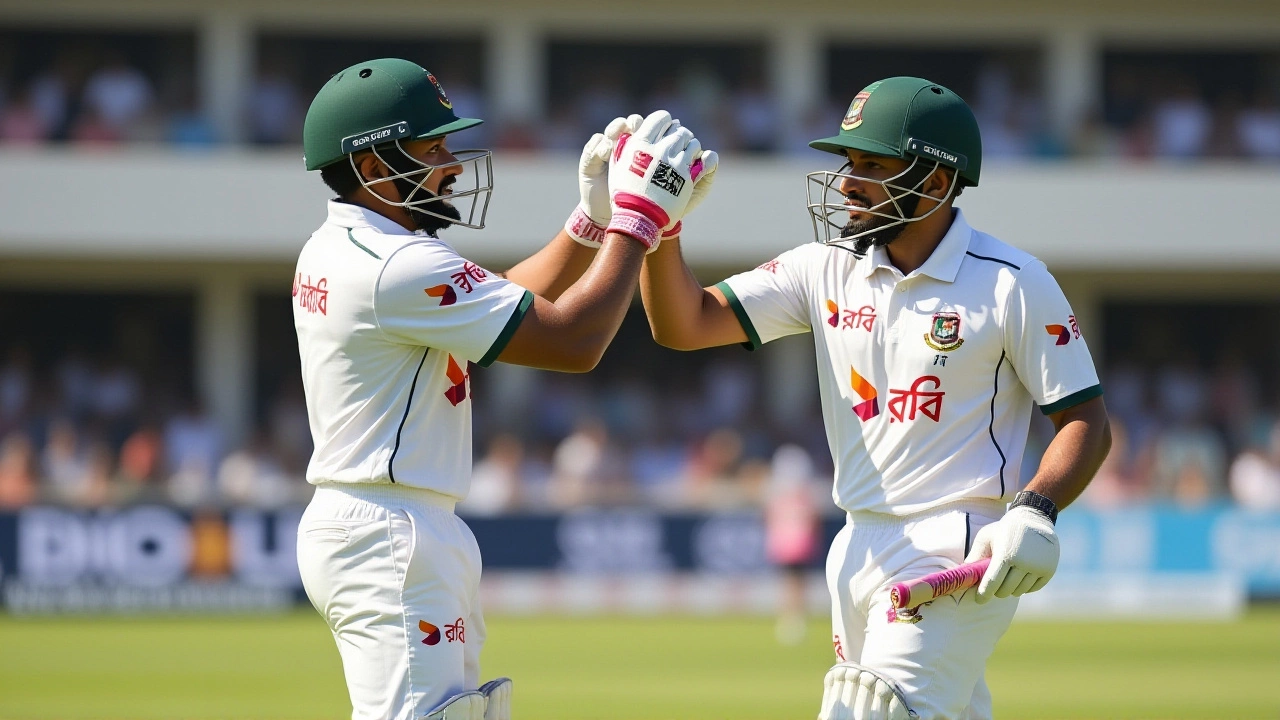At 38, Mushfiqur Rahim didn’t just play another Test match—he rewrote history. On June 17, 2025, at Galle Stadium, the Bangladeshi wicketkeeper-batsman smashed his second 150-plus score in Test cricket on Sri Lankan soil, joining an elite club once thought unreachable for overseas players: Joe Root, Brian Lara, and Stephen Fleming. The innings, a gritty 150 not out in a drawn match, wasn’t just about runs—it was about legacy. For Bangladesh, a nation still carving its identity in Test cricket, this was more than personal glory. It was proof that their heroes could stand shoulder-to-shoulder with the game’s greatest on its toughest foreign pitches.
From Bogra to the Global Stage
Born on May 9, 1987, in Bogra District, Bangladesh, Rahim didn’t come from cricketing privilege. He learned the game on dusty local grounds, often using makeshift stumps. By 2005, he’d broken into the national side as a wicketkeeper-batsman with raw talent but little polish. What set him apart wasn’t flair—it was endurance. While others faded under pressure, Rahim thrived. He became the first Bangladeshi to cross 4,000, then 5,000, then 6,000 Test runs. As of November 21, 2025, he’d played 98 Tests, amassing 6,328 runs at an average of 38.12, with three double-centuries to his name. And yes—he’s the only wicketkeeper-batsman in Test history to score two 200+ innings: 219* against Zimbabwe in 2018 and 203* in 2020.The Sri Lanka Factor
Sri Lanka’s spin-friendly pitches have long been a graveyard for visiting batsmen. Galle, with its uneven bounce and turning tracks, has chewed up legends. Yet Rahim didn’t just survive—he dominated. His first 150-plus score here came in 2018, when he carved out 154 against a Sri Lankan attack led by Rangana Herath. The second, in June 2025, was even more remarkable. With Bangladesh chasing a modest target, Rahim batted for over six hours, facing 182 balls. No one else on the side passed 40. His innings wasn’t pretty by modern standards—it was a masterclass in patience, footwork, and mental grit. Only Root (178 and 164 in 2018 and 2021), Lara (178 in 1997 and 153 in 2001), and Fleming (164 in 2000 and 151 in 2001) had done this before. Now, Rahim stands with them.
A Quiet Retirement, A Loud Legacy
Rahim stepped away from ODIs on March 5, 2025, after becoming Bangladesh’s first player to appear in 150 international matches. His final ODI highlight? A match-winning 125 against Sri Lanka in Galle in 2021—the innings that sparked Bangladesh’s first-ever series win over them. But Test cricket? That’s his cathedral. The Bangladesh Cricket Board confirmed he’ll continue playing Tests, with a crucial fixture against Ireland pending. His ODI retirement wasn’t a farewell—it was a refocusing. He’s no longer chasing quick runs or flashy boundaries. He’s chasing immortality.And he’s doing it with a quiet intensity that belies his stature. No social media rants. No press tours. Just bat in hand, helmet on, and a gaze fixed on the next ball. Even when he became only the second player since Len Hutton to be given out for obstructing the field in 2023—a bizarre moment that made headlines—he didn’t flinch. He just walked back, smiled, and said, “I’ll try not to do it again.”
Why This Matters Beyond Bangladesh
For years, Bangladesh was dismissed as a minnow. Even now, their Test wins are rare. But Rahim’s consistency has forced the cricket world to reconsider. He’s not just Bangladesh’s greatest batsman—he’s one of the most reliable Test performers of the last decade. His 219* against Zimbabwe remains the highest score by any wicketkeeper-batsman in Bangladesh’s history. He’s the 40th keeper to cross 150 in a Test innings, but only the third to do it twice in Sri Lanka. And unlike Root or Lara, who had decades of infrastructure behind them, Rahim built his career from scratch.Cricket analysts at The Daily Star put it bluntly: “Without Rahim, Bangladesh wouldn’t have a Test identity.” His ability to anchor innings under pressure has turned drawn matches into moral victories. When he’s at the crease, opponents know: this isn’t just another innings. It’s a statement.

What’s Next?
The next Test against Ireland—likely in late 2025 or early 2026—could be his 99th or even 100th. At 38, he’s not chasing records for the sake of it. He’s chasing relevance. And he’s succeeding. His name is now etched in the annals of Test cricket alongside the greats. Not as a novelty. Not as a statistic. But as one of the few who made the impossible look routine.Frequently Asked Questions
How many 150-plus scores has Mushfiqur Rahim made in Test cricket?
Mushfiqur Rahim has scored five 150-plus innings in Test cricket, including three double-centuries (219*, 203*, and 150*). Of these, two came in Sri Lanka—154 in 2018 and 150* in June 2025—making him one of only four overseas batsmen ever to achieve multiple 150+ scores on Sri Lankan soil.
Why is Rahim’s achievement in Sri Lanka so rare?
Sri Lanka’s spin-heavy pitches, especially at Galle, have historically crushed overseas batsmen. Only three visiting players—Joe Root, Brian Lara, and Stephen Fleming—had previously scored two 150+ innings there. Rahim joins them as the first from a non-Test powerhouse nation, making his feat even more extraordinary given Bangladesh’s limited resources and history in Test cricket.
Is Mushfiqur Rahim the only wicketkeeper-batsman to score two double-centuries in Test cricket?
Yes. Rahim is the first and only wicketkeeper-batsman in Test history to score two double-centuries (219* and 203*), both for Bangladesh. He’s also the only keeper to reach 6,000 Test runs and the only Bangladeshi to score a Test double-century. His 219* remains the highest score by any Bangladeshi keeper in Tests.
What made Rahim retire from ODIs but keep playing Tests?
Rahim retired from ODIs in March 2025 after reaching 150 international appearances, citing the physical toll of multi-format cricket. He stated Test cricket was his “true calling”—where his technique, patience, and mental resilience could shine. Unlike ODIs, where power-hitting dominates, Tests allow him to play his natural game: building innings over hours, not overs.
How does Rahim compare to other great wicketkeeper-batsmen?
Rahim ranks among the top 10 wicketkeeper-batsmen in Test history by runs scored. While he trails Adam Gilchrist and MS Dhoni in aggregate, he surpasses them in Test average (38.12 vs. Gilchrist’s 47.63 and Dhoni’s 38.20). His 219* is the highest by any keeper from a non-traditional Test nation, and his consistency under pressure makes him unique—especially for a player from a country with limited Test exposure.
What’s the significance of Rahim’s 219* against Zimbabwe?
That innings, played in November 2018, wasn’t just his highest score—it was Bangladesh’s first Test double-century against a non-Test giant. He spent 589 minutes at the crease, facing 421 balls, and became the first Bangladeshi to score a Test triple-figure score lasting over nine hours. It signaled Bangladesh’s arrival as a team capable of dominating, not just surviving, in Test cricket.
